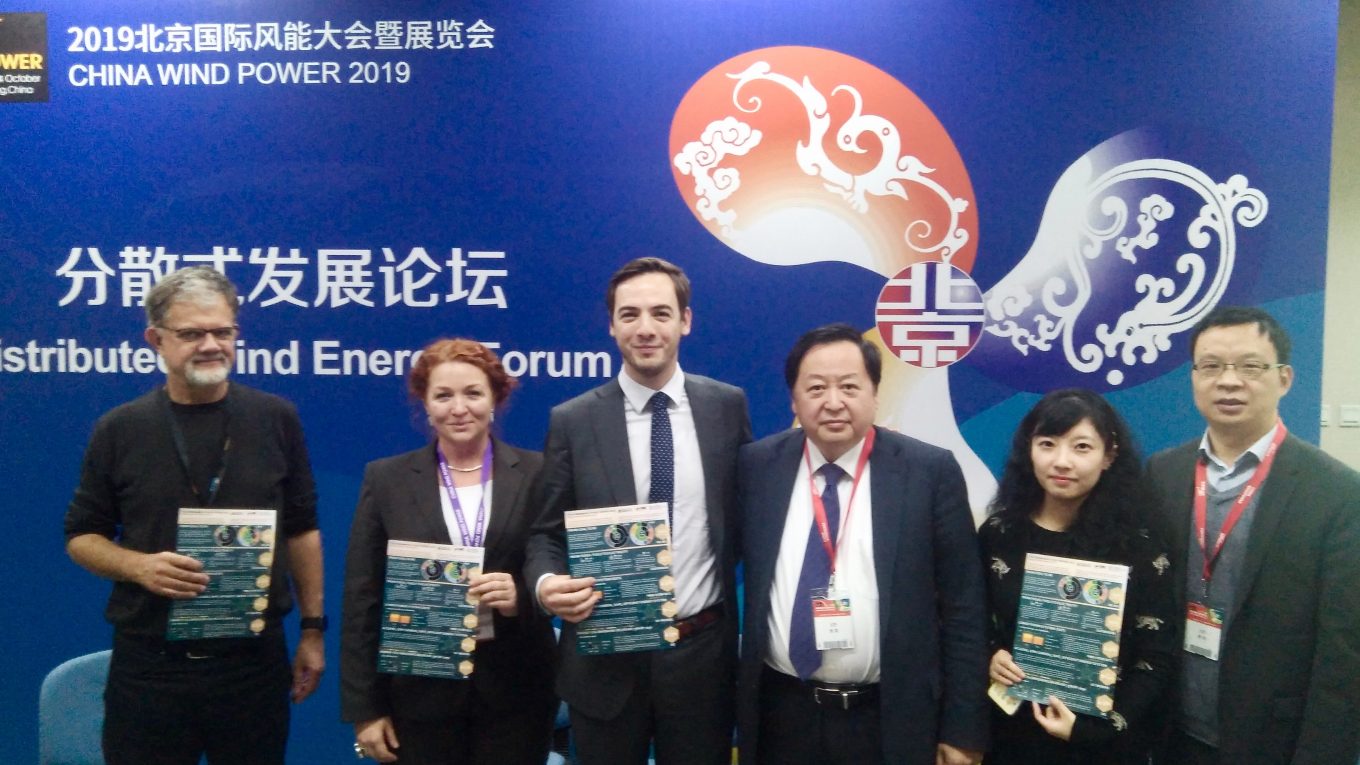CNREC presents main results from CREO 2019
On 23 October 2019, the China National Renewable Energy Centre (CNREC) co-hosted a joint report launch workshop with the the Danish Energy Agency (DEA) and the International Energy Agency (IEA) at the China Wind Power Conference in Beijing. Mr. Zhao Yongqiang, Deputy Director of CNREC, presented the main results of China Renewable Energy Outlook 2019 (CREO 2019) at the conference. The workshop also launched two research reports: the Distributed Wind and PV in Denmark and Germany delivered by DEA and German Energy Agency (dena), and the IEA’s Renewables 2019 – Analysis and forecast to 2024. Government officals from China National Energy Administration (NEA) and Ministry of Natural Resources (MNR) participated in the launch event.
CREO 2019 provides a forecast of China’s primary energy consumption and carbon emissions under a 2050 Below 2 °C Scenario. The fossil fuel share of China’s total energy consumption will decline from 90% in 2018 to 35% in 2050, and the power sector will achieve a 91% non-fossil share. To achieve the 2 °C goal of the Paris Agreement, China’s energy-related CO2 emissions will fall from 9.5 Gt in 2018 to 2.5 Gt in 2050. CO2 emission per capita will fall by three-fourths from 2018 to 2050.
Achieving these ambitious goals will depend on three main factors: energy efficiency improvements, electrification, and renewable electricity supply. Energy efficiency improvement is essential to reducing total energy demand and ensuring timely reduction in fossil energy production . Electrification is also an important means to both reduce primary energy consumption and displace fossil fuels. CREO 2019 predicts that in 2050 the electrification rate will increase from 28% in 2018 to 51% in 2050 in industry, from 30% to 58% in the buildings sector and from 2% to 39% in transport sector.
To ensure that green power supply is at the core of the energy system, the 14th – 16th Five-Year Plan periods are critical. By the end of 14th FYP in 2025, CREO anticipates China’s wind installed capacity will pass 500 GW while solar should reach 530 GW. By the end of 16th FYP in 2035, the annual installations of wind and solar capacity should peak around 150 GW per year. The result is a revolution in clean electricity supply.
To increase supply of electricity from renewable energy, it is also essential to enhance the grid’s ability to absorb variable renewables, and this requires more flexible power plants and a more dynamic electricity system. China’s electricity market should be able to mobilize existing flexibility through efficient price signals and market services; and guide investments in new sources of flexibility through the market design. The report anticipates that Chinese policy-makers will gradually expand the scale of provincial spot market pilots, and establish a unified national market by 2035.
Transitioning to a clean, low-carbon, safe, and efficient energy system in China will entail special effort in continuing to expand renewables, controlling coal consumption, improving energy efficiency in all sectors, establishing and refining power markets, establishing a more flexible power system, and creating an efficient carbon emissions trading system (ETS).

